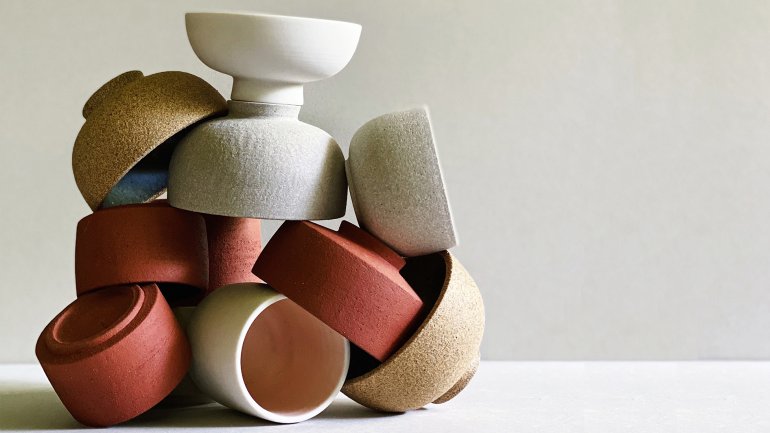The Queue: Miro Chun
The Queue: Miro Chun
Miro Chun gives materials a seat at the table with her subtle, tactile ceramics.
Subtle, smooth, and enticing, Miro Chun’s minimalist ceramics emphasize form and materials. Her functional, everyday wares—mugs, cups, bowls, plates, and pots, made from a variety of clay bodies and glazes—invite contemplation over a cup of tea or a meal. Chun, who lives in Phoenix, Arizona, and comes from a family of artists, trained and worked as an architect before turning her ceramics practice into a job, starting Miro Made This in 2014. Thanks to her precise architect’s eye, her neat tableware pieces nestle into each other and into cabinets. Still, even the best-laid plans have always betrayed ceramists. Chun turns her mistakes and seconds into “critical objects,” ceramics with visible imperfections that reflect the challenges of making by hand. Shivaun Watchorn wrote about her heavy white porcelain tea cups in “Tea Time” in the Winter 2024 issue of American Craft.
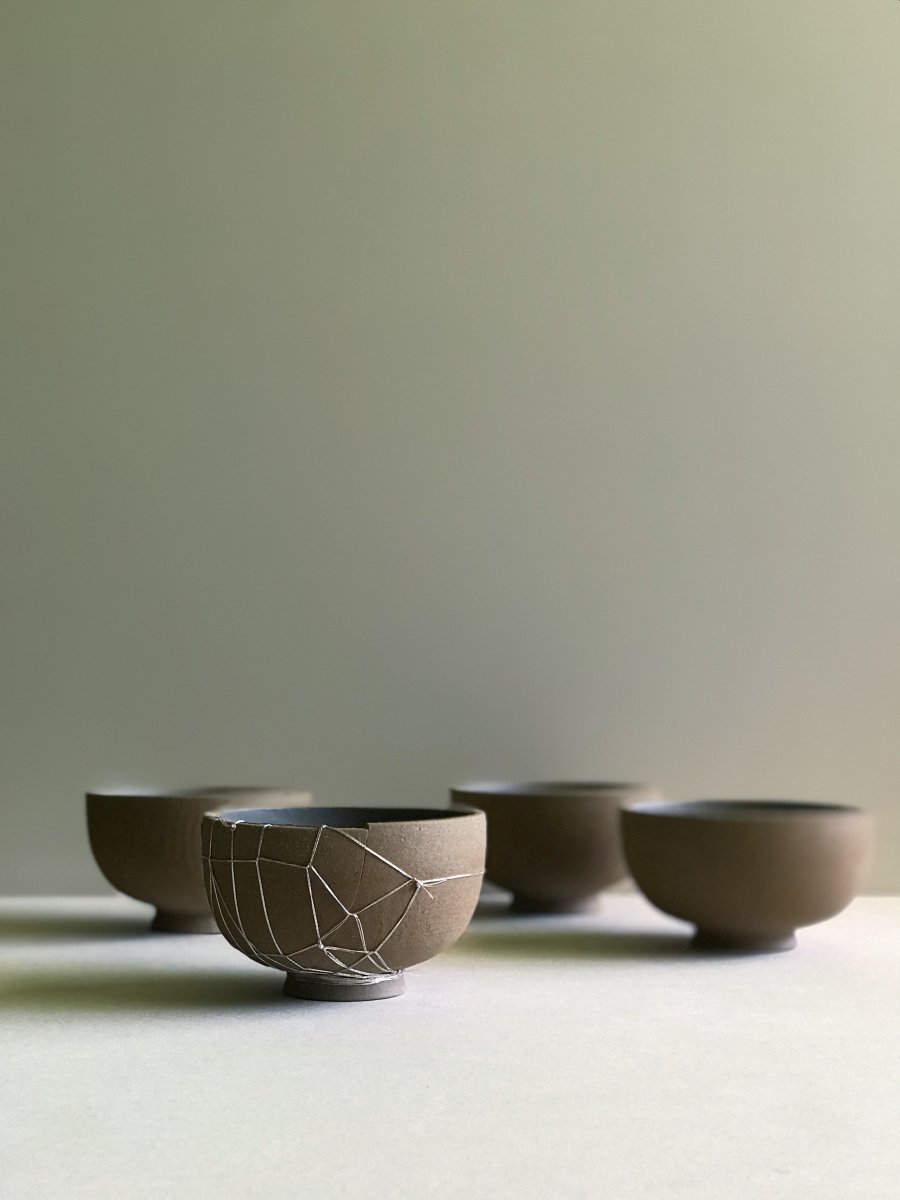
A broken stoneware bowl repaired with antique silver-wrapped silk thread, 2019, part of Chun’s #almostasgoodasnewseries. Photo by Miro Chun.
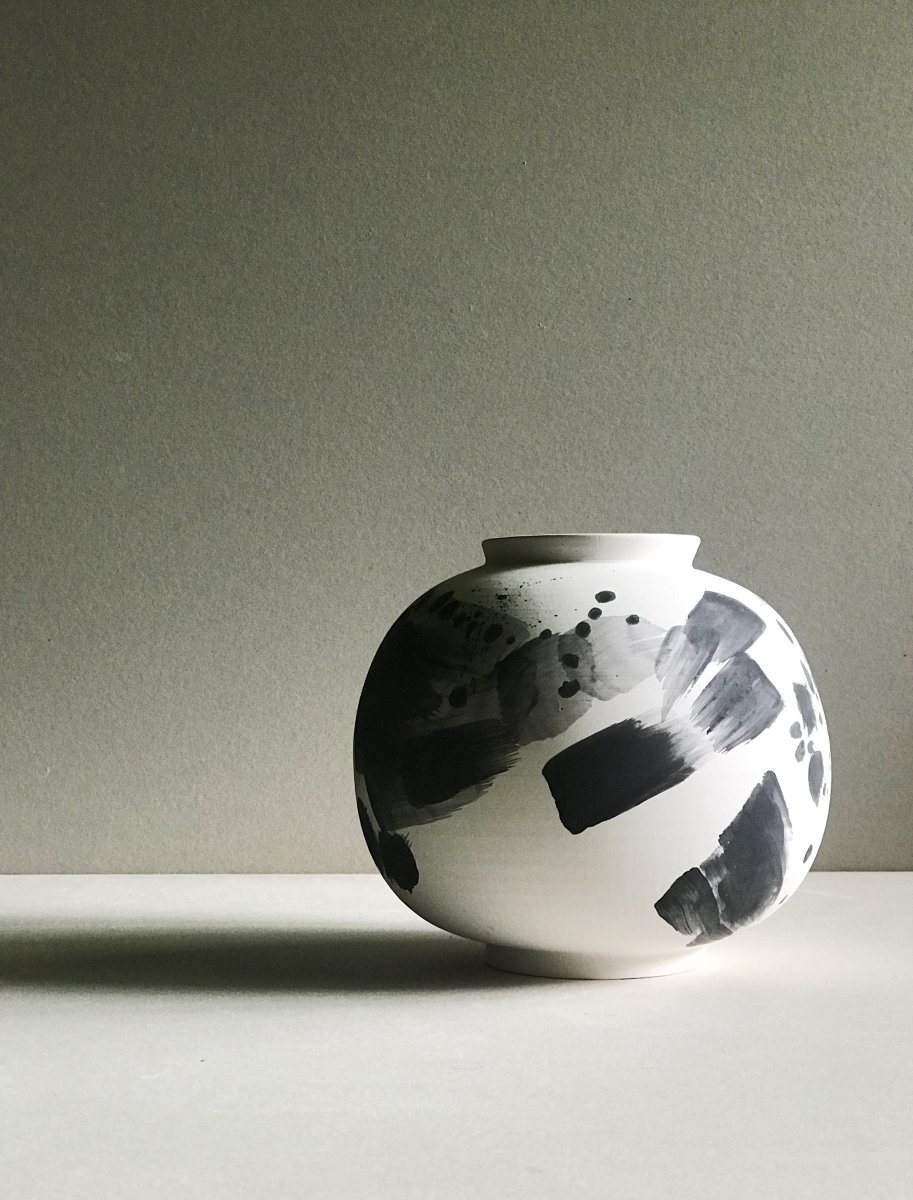
This vessel, a collaboration between Miro Chun and her mom, Changsoon Oh, is a part of the #miroandmirosmommadethis series. Photo by Miro Chun.
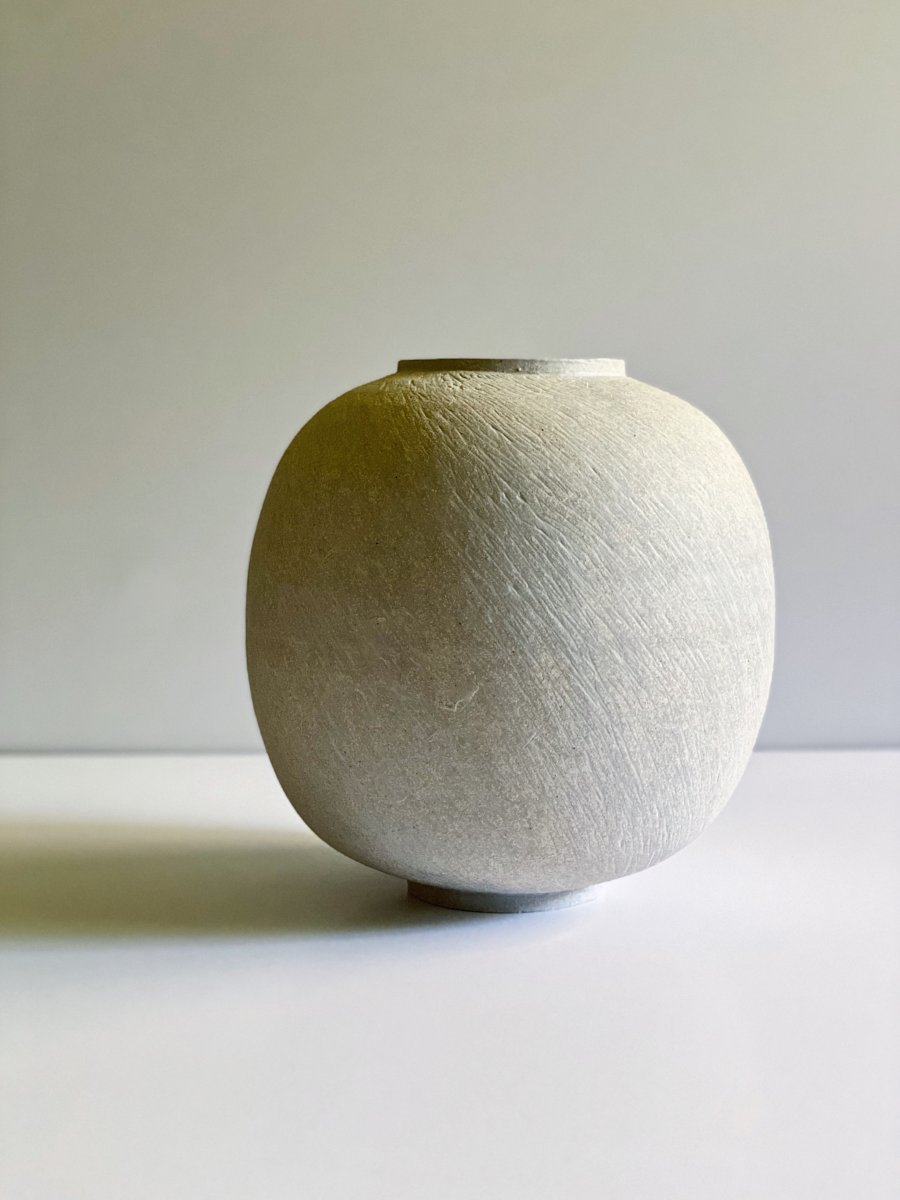
Miro Chun, Moonjar Rendering 1, 2023, stoneware, porcelain, 11 x 11 in. Photo by Miro Chun.
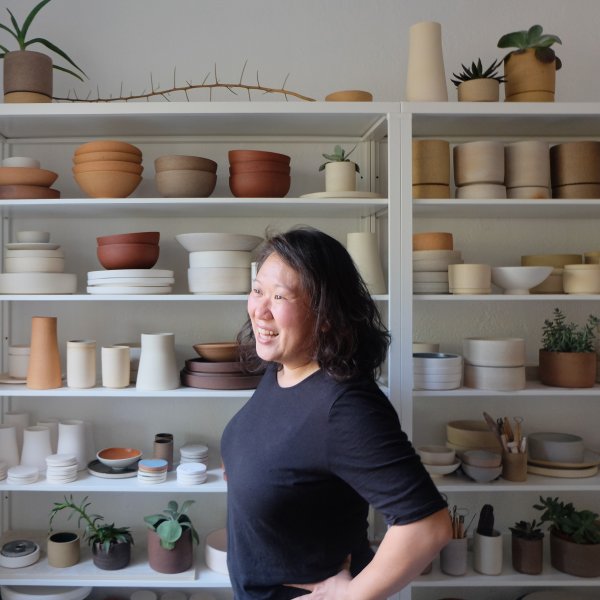
Miro Chun with finished work. Photo by Mimi Chun.
How do you describe your work or practice in 50 words or less?
I am a ceramist who divides my practice into two parts: the making of minimalist functional ware and of critical objects. The critical objects I make are based on observations of the process of making ceramics, the unseen moments of beauty within that process, and the conflict inherent in reaching for perfection when making objects by hand.
You previously worked as an architect. How does this training translate into your ceramic work?
A lot of architecture is about learning to work with everyday building materials and to recognize the integrity and aesthetic value in those materials and how they perform. A sheet of plywood is both natural and man-made, and that intersection has an interesting tension inherent in its character. With my functional ware, I use commercial clay bodies, then leave the exteriors unglazed in order to highlight the beauty of those readily available mixes.
You’ve collaborated with your mother on surface designs for your work. What is that collaborative process like?
The collaboration with my mom, Changsoon Oh, is both challenging and rewarding! My functional ware tends to be very controlled and precise (my architecture background again!) and my mother’s work is much less so. I have certain ideas about how things should look in terms of scale and form, and my mother has a different interpretation sometimes. There is a lot of back-and-forth, experimentation, and always, because of the nature of ceramics, an element of surprise!
Businesses such as restaurants and florists use your wares. Who would you most like to collaborate with, and what kind of product would you love to make?
I would love to collaborate with a Korean American fine dining restaurant. I’ve recently been working on developing pieces that explore how Korean food is plated and presented and how that affects the design. There’s such an element of theater in fine dining, and I would love to be able to work with a chef to look at the pacing and presentation opportunities that a dedicated set of bespoke tableware would allow.
If you could have work from any contemporary craft artist for your home, whose would it be and why?
I love Julia Turner’s work. Her contemporary jewelry is just lovely. There’s a rhythm and pattern to her work that's both playful and inventive. And I love that she doesn't rely on precious materials to create her pieces, but is instead inventive in the way she uses color and everyday materials such as wood.
Which craft artists, exhibitions, or projects do you think the world should know about, and why?
This is a bit of nepotism, but I’d have to say my sister Mimi O Chun! She’s also an artist. She sews impeccably crafted, life-size soft sculptures out of fabric that comment on contemporary culture.
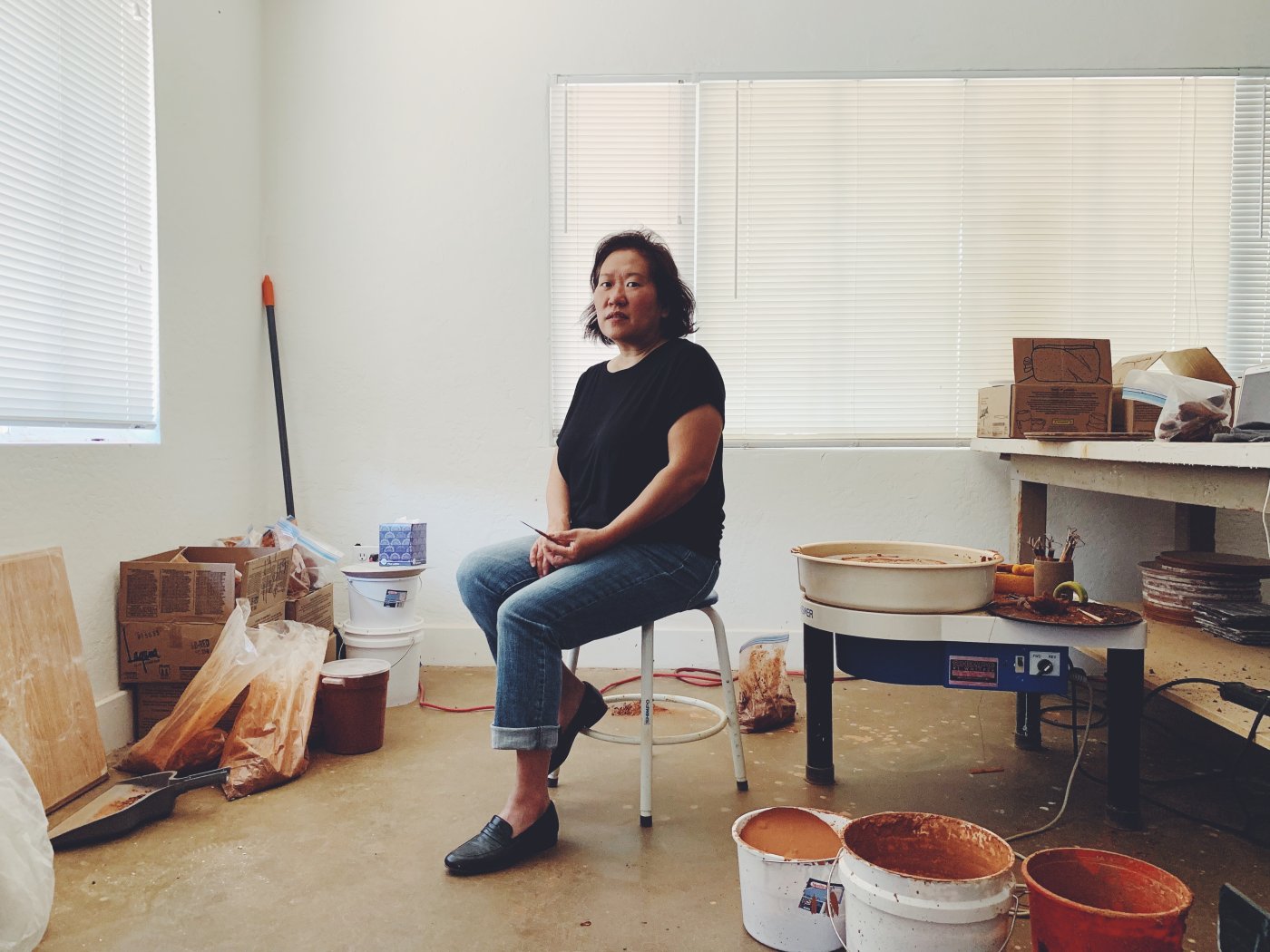
Miro Chun in her studio. Photo by Mimi Chun.
